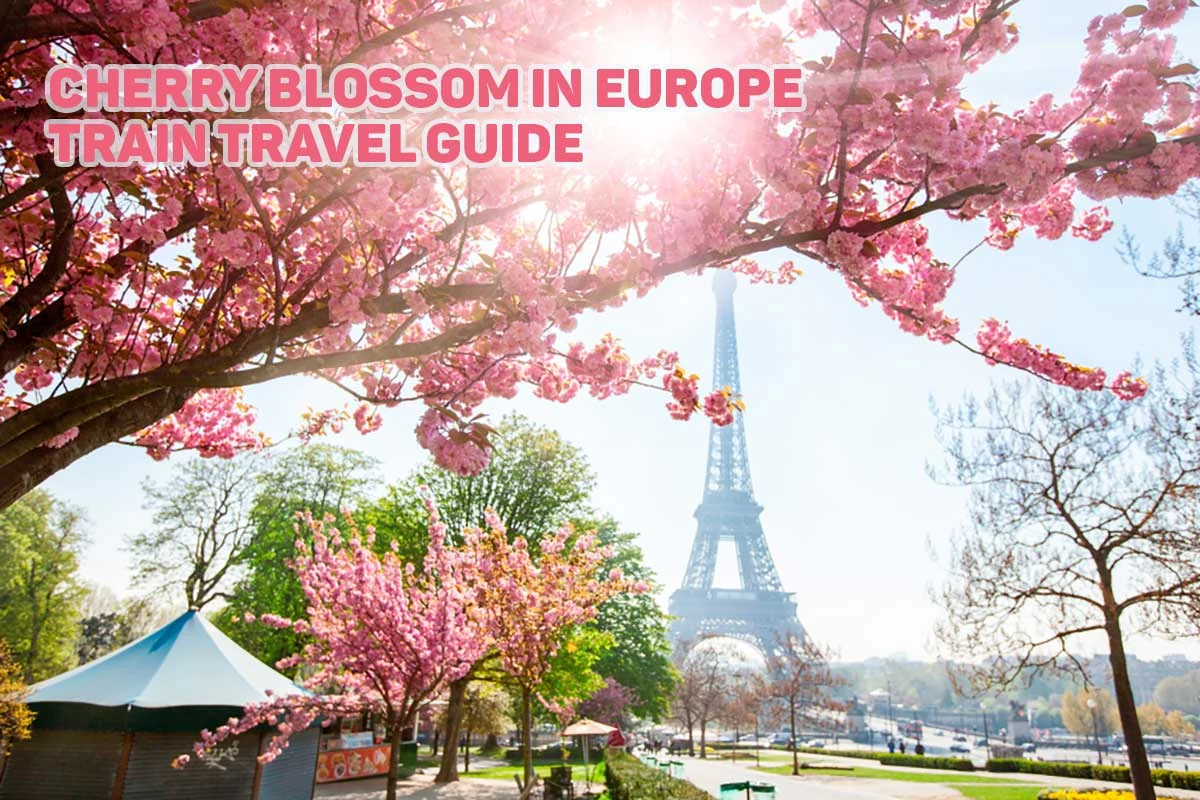My Gateway to Venetian Magic
From Milan’s bustling fashion hub to Venice’s dreamy canals, the train ride between these two cities is more than just a journey—it is an experience. Picture yourself at Milan Centrale, sipping a quick espresso before boarding a sleek Italian high-speed train. In just over two hours, you are not only transported across the country but also across worlds stepping straight into Venice’s lagoon and cobbled streets without the stress of airports or long drives.
I recently took this Milan to Venice train route myself, and it completely changed the way I look at Italian travel. Smooth, scenic, and surprisingly affordable, this trip was both efficient and magical. In this guide, I’ll share everything you need to know—from train types and ticket hacks to what it actually feels like on board—so you can plan your own seamless adventure.
Why Take the Train from Milan to Venice?
Speed and Convenience
The Milan to Venice train journey covers approximately 268 kilometers in just 2 hours and 15 minutes on the fastest services. When I compared this to flying, considering airport transfers and check-in times, the train was actually faster door-to-door. High-speed trains depart regularly throughout the day—I counted up to 64 trains daily on some routes, giving you incredible flexibility in your travel plans.
Comfort That Airlines Can’t Match
Unlike cramped airplane seats, the trains offer spacious seating with proper legroom, power outlets, and free Wi-Fi. During my journey, I could work, read, or simply watch the Italian countryside roll by through large panoramic windows. The smooth ride means you can even enjoy a proper Italian coffee without worrying about turbulence.
Environmental Benefits
As someone conscious about my carbon footprint, I appreciate that train travel produces significantly lower emissions per passenger compared to flying. The European Environment Agency confirms that rail travel is the most environmentally friendly option for this route.

Route Overview and Operators
The Journey Path
The train departs from Milano Centrale and travels east through the Lombardy and Veneto regions before arriving at Venezia Santa Lucia, right in the heart of Venice. You’ll pass through several notable cities including Verona, Vicenza, and Padua, though most high-speed services don’t stop at these intermediate stations.
Train Operators and Types
Two main operators serve this route:
Trenitalia operates Frecciarossa (Red Arrow) high-speed trains, which can reach speeds up to 300 km/h. These are the fastest option, with journey times starting from 2 hours and 13 minutes.
Italo runs competing high-speed services with similar journey times of around 2 hours and 15 minutes. In my experience, both operators offer excellent service, so your choice often comes down to schedule and price.
Service Classes Available
Both operators offer multiple service levels:
- Standard/Economy: Comfortable seating with basic amenities
- Premium/Prima: Extra legroom and welcome refreshments
- Business: Wider seats and complimentary meal service
- Executive/Club: Premium seating with gourmet dining
Stations: What You Need to Know
Milano Centrale: Your Starting Point
Milano Centrale is one of Europe’s most impressive train stations. The Art Deco facade is stunning, but don’t let its grandeur intimidate you. I found navigation straightforward once I understood the layout:
- The main concourse (Galleria Commerciale) is one level up from street level
- There are 24 platforms, numbered from left to right
- High-speed trains typically depart from central platforms 14-17
- Arrive 30-45 minutes early to allow time for ticket validation and platform finding
Pro tip: Download the Trenitalia app to check real-time platform information before the official boards update.
Venezia Santa Lucia: Your Magical Arrival
Arriving at Venezia Santa Lucia is truly special—you step off the train and immediately see the Grand Canal stretching before you. The station sits right on the water, making it arguably the most impressive arrival experience of any European station.
Key details about Santa Lucia:
- It’s a terminus with 23 platforms
- The station connects directly to vaporetto (water bus) services
- Left luggage facilities are available if you want to explore before check-in
- The historic center is within walking distance—20 minutes to Rialto Bridge, 27 minutes to St. Mark’s Square
What to Pack: My Essential Items List
The Basics
Based on my experience, here’s what I always pack for this journey:
Tech Essentials:
- Portable phone charger (trains have outlets but it’s good backup)
- Headphones for entertainment or call
- European plug adapter if needed
- Downloaded content on your phone/tablet
Comfort Items:
- Small pillow or neck support for a more comfortable journey
- Light blanket or scarf (air conditioning can be strong)
- Comfortable walking shoes for Venice’s many bridges
Travel Documents:
- Passport or ID card
- Train tickets (digital is fine, but I keep screenshots as backup)
- Travel insurance documents
- Hotel reservations
Luggage Considerations
One major advantage of train travel is generous luggage allowances. Both operators allow significant luggage without extra charges:
- Small bags fit under seats or in overhead racks
- Medium suitcases go in overhead compartments
- Large luggage has dedicated spaces at car ends
Important note: Be prepared to lift your suitcase overhead—the racks run the full length of cars but require some strength to load.
Onboard Experience: What to Expect
Seating and Amenities
The high-speed trains are modern and well-equipped. In my experience with Business class, seats were leather with good recline and footrests. All seats have:
- Power outlets and USB ports
- Fold-down tables suitable for laptops
- Free Wi-Fi (though speed can vary)
- Air conditioning throughout
Food and Dining Options
This was one aspect where I learned to manage expectations. Unlike luxury trains, food service is quite basic:
What’s Available:
- Vending machines with snacks and beverages
- Café car on some trains with limited selection
- Welcome service in Premium/Business classes
My Recommendation: Pack your own food. Before boarding, I stop at one of Milano Centrale’s many food outlets—there’s everything from quick paninis to proper Italian meals. The train has tables, making it easy to enjoy your own picnic while watching the scenery.youtube
Scenic Highlights
While not as dramatic as some Alpine routes, the Milan to Venice journey offers pleasant pastoral views. You’ll see: youtube
- Rolling hills and vineyards in Lombardy
- Agricultural landscapes and small towns
- Brief glimpses of Lake Garda (sit on the left side)
- The causeway across the Venetian lagoon (a highlight of any arrival)
Booking and Costs: Getting the Best Deals
Ticket Prices
Costs vary significantly based on timing and how far in advance you book:
- Budget options: Start from €14.90-€24.15 for basic tickets
- Standard fares: Average around €155.45
- Premium services: Can reach €286.79 for Executive class
Booking Strategy
From my experience booking multiple trips:
Book in Advance: I’ve saved significantly by booking 2-3 weeks ahead, sometimes finding tickets for under €20. Last-minute tickets can be expensive and may sell out.
Be Flexible: Off-peak times (mid-morning, early afternoon) often have better prices.
Compare Options: Both Trenitalia and Italo serve the route, so compare prices and schedules.
Consider Ticket Flexibility: Cheaper tickets are often non-refundable, while more expensive ones allow changes.
Where to Book
I use several reliable platforms:
- Trenitalia.com for official Trenitalia trains
- Italotreno.com for Italo services
- Trainline for comparing all options in one place
All offer mobile tickets, eliminating the need to print anything.
Practical Travel Tips
Best Times to Travel
- Early morning trains (7-9 AM): Often less crowded and good prices
- Late morning/early afternoon: My preferred time for comfortable travel
- Avoid evening rush hours: More expensive and crowded
What to Do Upon Arrival in Venice
- Don’t rush: Take a moment to appreciate the Grand Canal view from the station
- Plan your route: Venice is walkable but complex—have your hotel directions ready
- Consider a water taxi: If you have heavy luggage, it’s worth the expense for door-to-door service
Common Mistakes to Avoid
- Don’t confuse stations: Make sure you’re going to Santa Lucia, not Mestre
- Validate regional tickets: High-speed tickets don’t need validation, but regional ones do
- Check platform changes: Italian stations sometimes change platforms last-minute
Final Thoughts: Why This Journey Works
After taking this route multiple times, I can confidently say the Milan to Venice train represents everything that’s great about European rail travel. It’s fast, comfortable, environmentally friendly, and drops you right in the heart of both cities.
The journey itself becomes part of your Italian adventure—whether you’re working on your laptop, reading about Venice’s history, or simply watching the Italian countryside unfold outside your window. For me, stepping off that train and seeing the Grand Canal for the first time made every minute of planning worthwhile.
Book your tickets in advance, pack some good snacks, and prepare for one of Europe’s most convenient and enjoyable train journeys. Buon viaggio!
Have you taken the Milan to Venice train? Share your experience in the comments below, and don’t forget to subscribe for more European travel guides!





